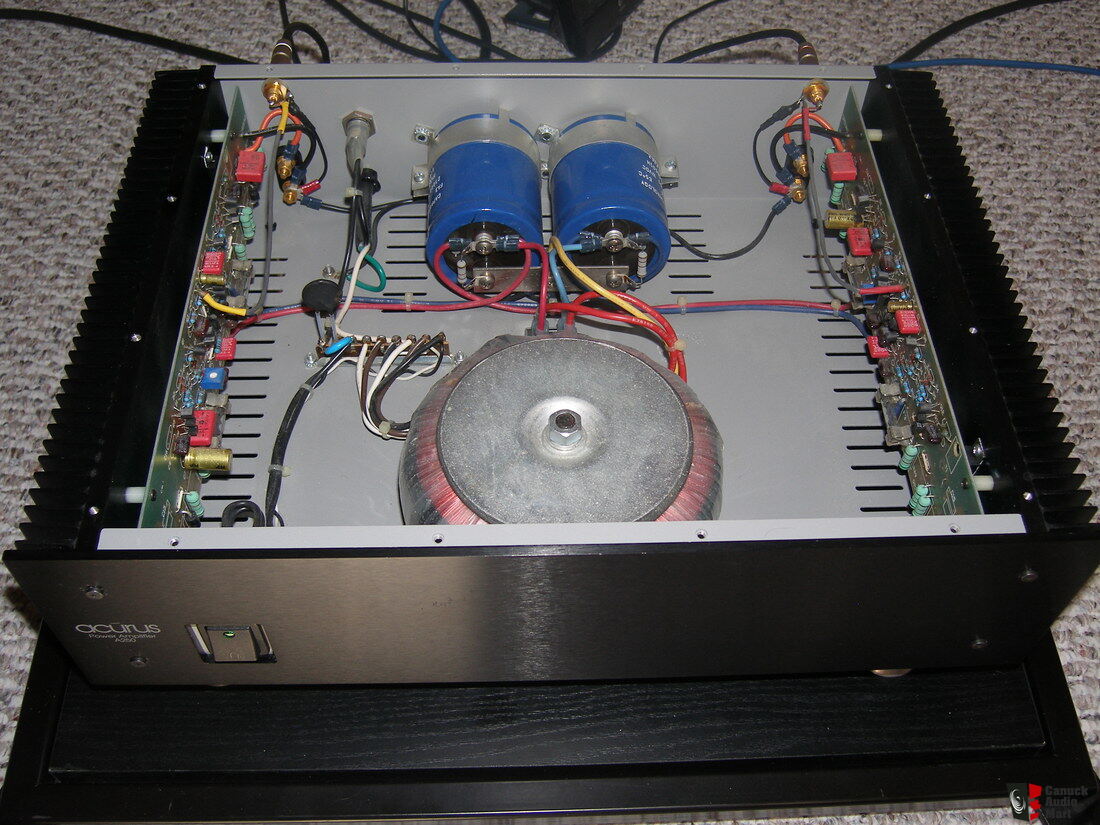Just found one of these on eBay and had it delivered.
http://www.rotel.com/product/rb-990bx
Production range is from 1992-1997, and the serial numbers do not contain date stamping, nor did they track shipment info, so it's in a 5 year range.
The fascinating part is that as one should do with 20+ year old electronics, I popped off the cover to have a peek at the condition of things, and was simply astonished. It literally looks brand new. Now, I know that you've heard that before, but I'm going to add some pics to show what I mean. The white plastic parts are still white as snow, no age yellowing. The bus-bar jumpers are still gleaming copper. The screw heads show no signs of corrosion. The bare aluminum heat sinks are oxide free, and the thermal pads behind the transistors are as white and fresh looking as a recent manufacture item.
I've not powered it on yet because I've heard repeatedly in audiophool circles that leaving caps unused for years is not the best for them. Many seem to recommend some regiment of variac controlled voltage into the system to 'recondition' the caps, which sounds to my non-electronic-engineer ear like a mother blowing cigarette smoke in a baby's ear to cure ear infection, or just plain old snake-oil inspired audiophoolery.
In this photo, you can see that the only visible issue is the age-darkened glue they used to fix the caps. Note the shiny jumpers. Even the clear plastic shroud over the power switch\relay is still clear.

Transistors....heat sinks....push connections....all look like new.

What say the electronics pro's on the forum? Fire it up, or do I need to fret about prepping what looks to be a never-used amp that is 21+ years old?
http://www.rotel.com/product/rb-990bx
Production range is from 1992-1997, and the serial numbers do not contain date stamping, nor did they track shipment info, so it's in a 5 year range.
The fascinating part is that as one should do with 20+ year old electronics, I popped off the cover to have a peek at the condition of things, and was simply astonished. It literally looks brand new. Now, I know that you've heard that before, but I'm going to add some pics to show what I mean. The white plastic parts are still white as snow, no age yellowing. The bus-bar jumpers are still gleaming copper. The screw heads show no signs of corrosion. The bare aluminum heat sinks are oxide free, and the thermal pads behind the transistors are as white and fresh looking as a recent manufacture item.
I've not powered it on yet because I've heard repeatedly in audiophool circles that leaving caps unused for years is not the best for them. Many seem to recommend some regiment of variac controlled voltage into the system to 'recondition' the caps, which sounds to my non-electronic-engineer ear like a mother blowing cigarette smoke in a baby's ear to cure ear infection, or just plain old snake-oil inspired audiophoolery.
In this photo, you can see that the only visible issue is the age-darkened glue they used to fix the caps. Note the shiny jumpers. Even the clear plastic shroud over the power switch\relay is still clear.
Transistors....heat sinks....push connections....all look like new.
What say the electronics pro's on the forum? Fire it up, or do I need to fret about prepping what looks to be a never-used amp that is 21+ years old?

